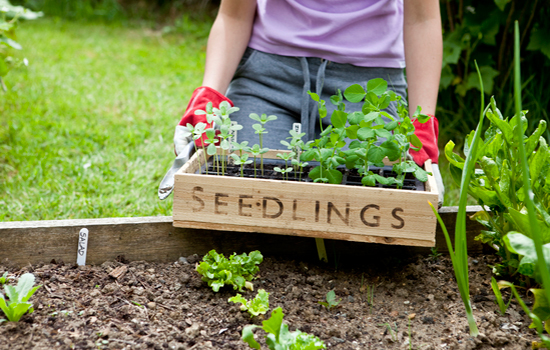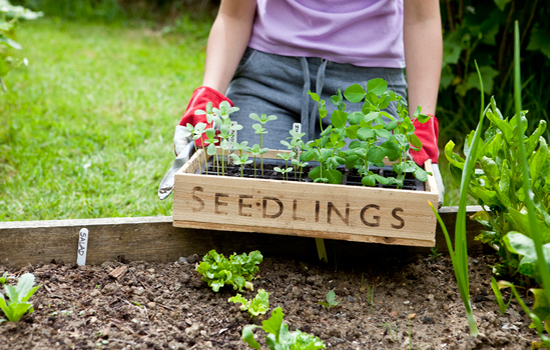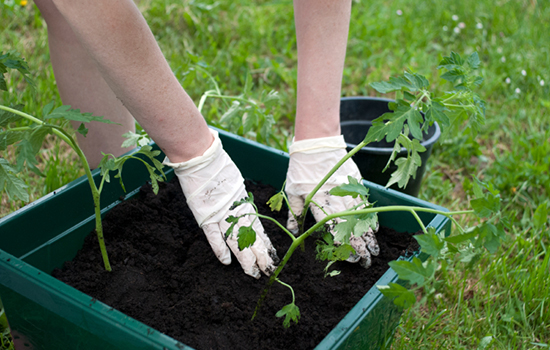
According the Australian Bureau of Statistics, 90% of Australians live in urban areas with over 25% of them living in high-rises, units and apartments.
That means that a quarter of Australians live in dwellings without large gardens or outdoor areas. This doesn’t mean that garden-less Australians have to do without.
We’ve put together a few tips for apartment dwellers to plan, create and maintain their own balcony, window or courtyard-friendly container gardens.
1. Pay attention to drainage
Any pot you use for container gardening must have appropriate drainage. If your pot does allow enough water to escape the soil will become too damp, which causes the roots to rot and consequently the plant will die.
Long & large containers will need more drainage holes.
Lots of pots don’t come with sufficient drainage so if you suspect your pot or container isn’t letting through enough water, punch or drill a few extra holes in to make sure.
Tip: Long and large containers will need bigger and more drainage holes.
2. Be aware of lighting
You need to carefully read your plant labels and figure out which ones like full sunlight, partial sunlight and shade.
Have a look at your balcony or courtyard garden and look for lighting cues. Areas that always seem damp won’t be getting much sun and areas that look very dry or sun bleached will be getting lots of sun.
You can use these cues to place your plants in the appropriate areas.
On trend: Renaissance of the veggie garden
3. Water AND feed your plants
It’s not enough to simply water your plants, you should also fertilise them. When plants are in the ground, they can get nutrients from the earth but container plants have limited resources of nutrients so you need to top them up.
You can buy or make fertilisers that are appropriate for container gardens and you should use them once every two weeks (depending on the plant type).
4. Read the labels that come with your plants

Make sure you take the advice of the people you’re buying plants from and read the labels. Care instructions for plants can vary dramatically so make sure you know what each plant needs from you.
It often helps to have the plant label stuck inside the pot so you always know what the care instructions are.
5. Check your distances
This is crucial for container gardening as the space for plants is limited.
Most plant labels will have instructions on how much space they need and it’s important that you get this right. Grab a ruler and measure it to make sure it’s correct.
It’s important to give each plant the space they need.
Plants such as mint will easily suffocate other plants if they’re potted too close together so it’s important to give each plant the space they need.
6. Pick good container buddies
It’s best to group plants together that have the same needs.
For example low water, low-light plants should be potted together and full sunlight, high water plants together will also make excellent container neighbours.
7. Use the right soil

Regular garden soil is no friend of container gardening – you must invest in good quality potting soil.
It’s recommended that you speak to a garden specialist who will be able to advise on you on the type of soil you need.
8. Herbs thrive in container garden settings
Herbs are an excellent place to start with container gardening – they thrive in small environments, they love being planted near each other, you can use them in your cooking and they make your balcony or terrace smell amazing.
How to: Build the perfect rooftop garden
9. Size matters
A good rule of thumb with container gardening is the bigger, the better. The point of container gardening is that it’s small and concentrated but the more room you give your plants to thrive in, the better.
That’s not to say that some plants won’t thrive in smaller containers, it’s just easier to maintain container gardens in the largest vessels that will fit in the space you have.
10. You need to commit to it
Container gardens are not a plant-and-forget kind of situation. You need to be constantly monitoring your plants, feeding them, watering them and re-potting them if they look unhappy.
Beautiful gardens don’t look that way by accident, so make sure you’re fully committed to your garden before you spend the money setting it up.
Follow us on Twitter for more news, tips and inspiration. Become our mate on Facebook and explore our Pinterest boards.
Like this article or found it helpful? Share it!